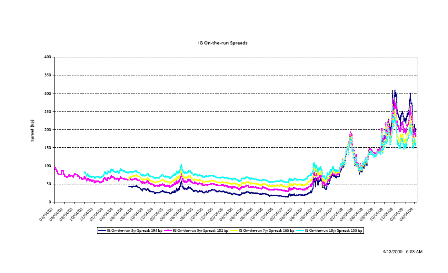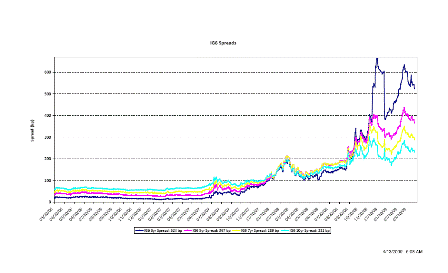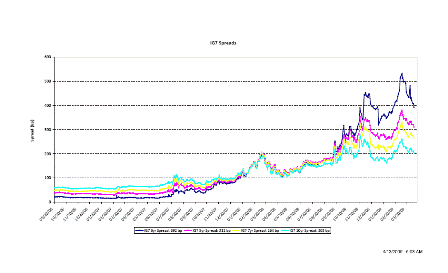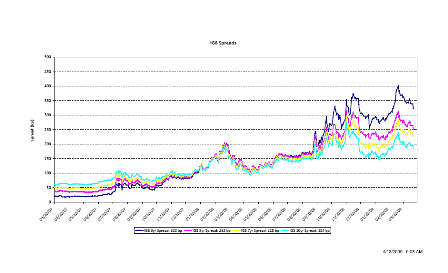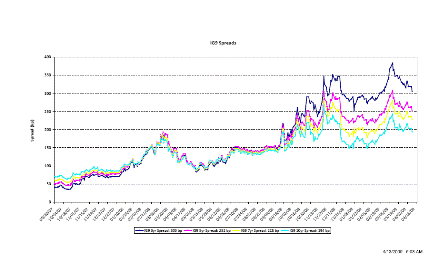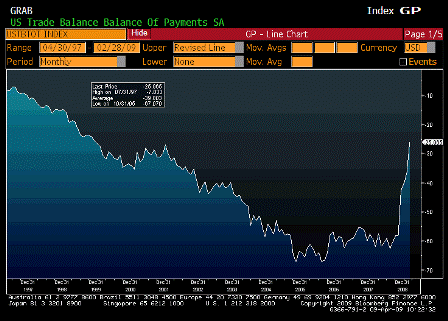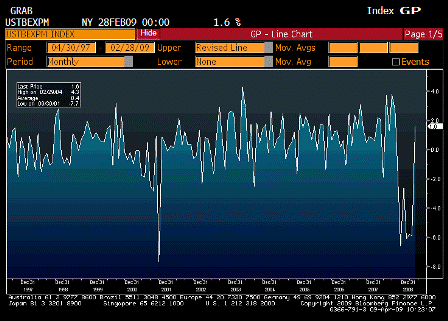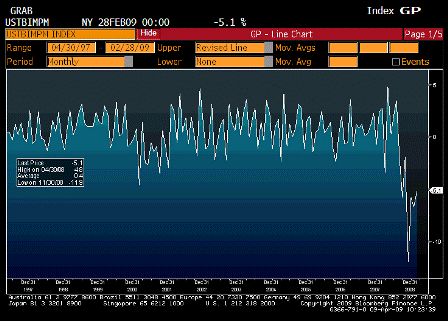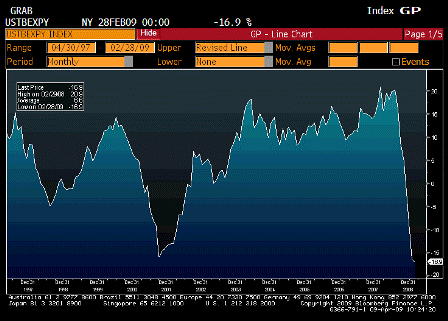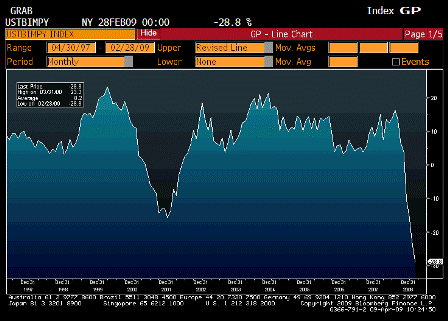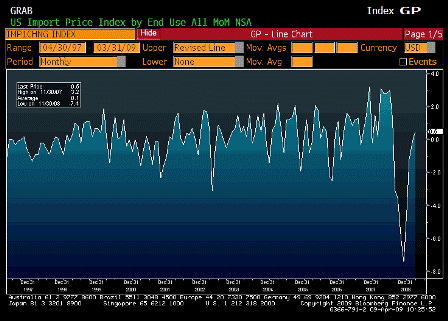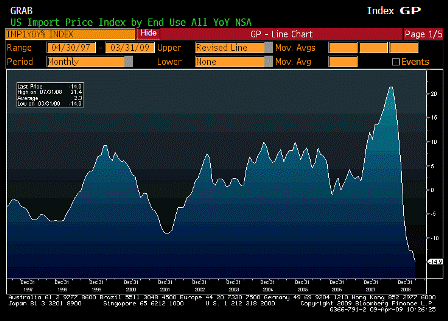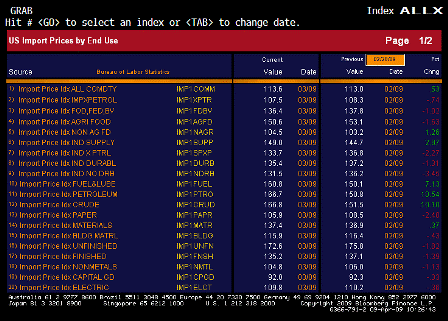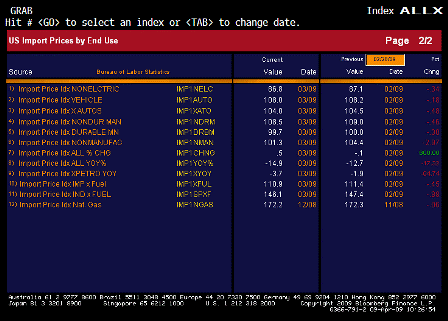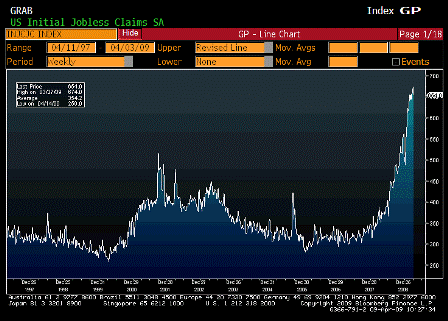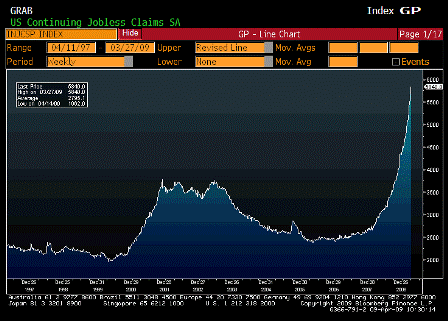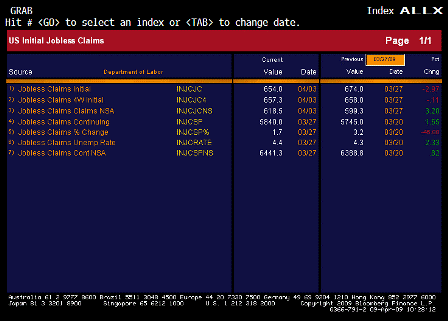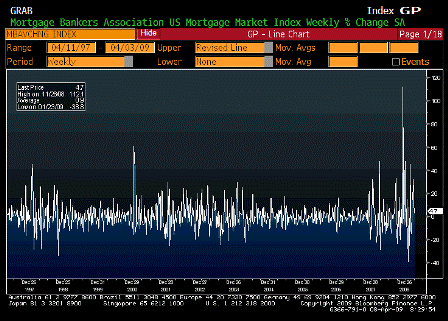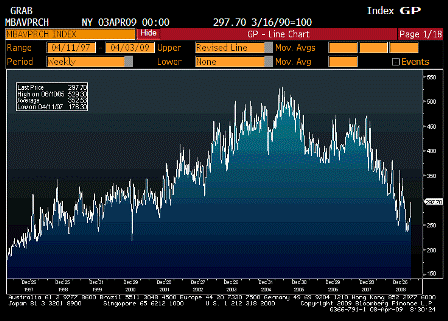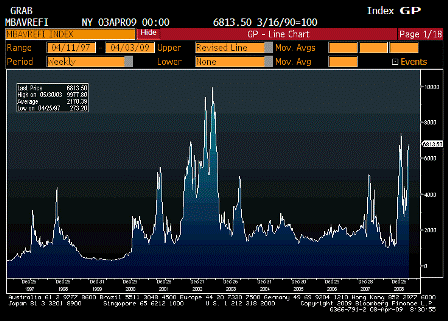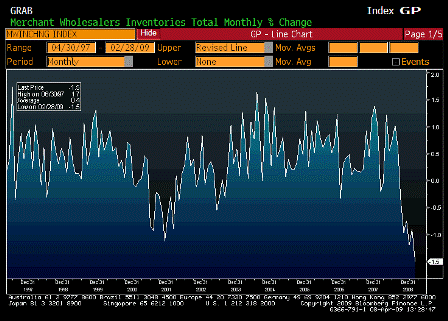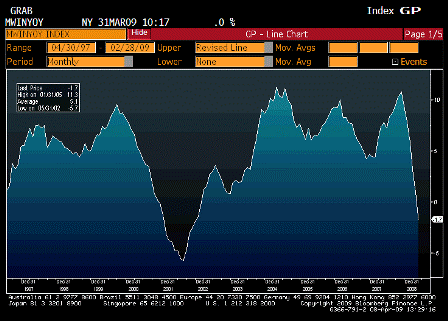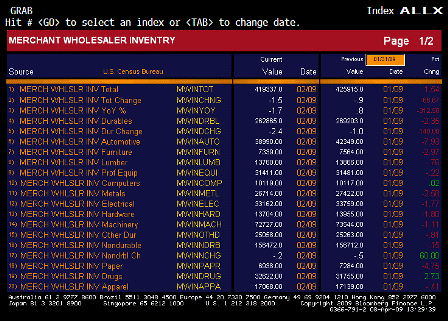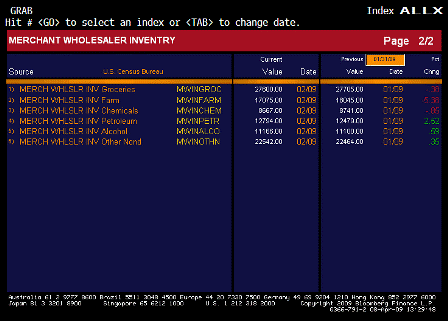(IF ANYONE HAS BUITER’S EMAIL ADDRESS KINDLY FORWARD THIS, THANKS)
The question is, why has the Fed entered into new swap lines to be able to borrow foreign currency from several CBs who already have Fed dollar lines?
Several possibilities not mutually exclusive:
- They may have agreed on some kind of international currency stability scheme that use swap lines to keep currencies stable to each other.
- More likely is the notion that these lines are needed to control global interest rates in one’s own currency. The Fed started extending the swap lines to control USD LIBOR which was partially determined by banks outside the US.
- The Fed could also be worried about the dollar getting weak and not having foreign currency reserves to directly intervene. This could be signs of the heightened level of this insecurity from having ‘increased the money supply’ by ‘printing money’ and a zero rate policy, as none of them understand that the size of their balance sheet and the low interest rate policy have nothing to do with inflation.
Yes, it worked to do this, but as previously explained, (indirectly) lending to lesser, foreign credits at low rates to keep rates down threatens a much larger problem.
Note that it was announced last week that Mexico was drawing down its $30 billion line from the Fed. How much sense does it make for the Fed to lend Mexico 30 billion dollars, functionally unsecured, just to somehow help keep LIBOR down? Mexican banks aren’t even in the LIBOR basket. There are other options to get LIBOR down without extending unlimited dollar loans to unknown and potentially high risk borrowers. What the Fed has done is reckless at best.
So in a world of CBs who put the highest priority on being able to control their interest rates and don’t recognize the risk of extending potentially bad loans to do it, using these swap lines for interest rate control make perfect sense.
What they do with their balance sheet is about price and not quantity.
And with the non government sectors quickly becoming net savers to the tune of nearly $10 trillion lowering rates is fiscally contractionary. Not to mention rates are a marginal cost of production, and nowadays ‘inflation’ most often comes through the cost side.
So the Fed arranging foreign currency credit lines might be a ploy to show the other CBs they are serious about the value of the dollar long term. Of course, Bernanke has many times stated to Congress the value of a weak dollar and in his mercantilist view he’s trying to support exports and narrow our trade gap that he sees as a ‘bad thing’ per se, as he still holds on to the gold standard construct of ‘national savings’ and sees our trade gap as an imbalance, rather than an enhancement of our real terms of trade and real standard of living. So I’d say that unless something changes the Fed would welcome a weak dollar and not use the new swap lines to support it. In fact, it is more likely that in addition to getting USD interest rates down to support lending, the Fed also acted to support demand for US goods and services by keeping the world USD ‘short’ position from strengthening the dollar and hurting US exports.
Functionally these swap line advances are like World Bank or IMF lending. While the advances by those agencies always start out as loans, historically they have morphed into fiscal transfers, as, in real terms, it all becomes a race to the bottom whereby whoever borrows the most and inflates the most wins.
These central bankers, however, (errantly) rely on ‘inflations expectations theory’ for their understanding of inflation, which of course is inapplicable, but it’s all they have and it’s deeply believed.
Therefore they aren’t worried about the inflationary aspects of swap lines,
and the incentive for an inflationary race to the bottom. (They do however worry to some degree about weak currencies causing inflation expectations to elevate)
So currently, for example, the Fed is hanging out a free lunch to any Central Bank that stops worrying about the possibility of paying back the Fed, and simply starts behaving as if the dollar loans are fiscal transfers, by looking the other way when their member banks start using them as such. I see signs of this possibility in the eurozone where the borrowings have been outstanding far too long for comfort that the banks are making good faith efforts to pay them down.
Regarding USD LIBOR, if I were running the Fed I’d ban the use of LIBOR with member banks. The idea of a mob of old men in bow ties sipping sherry at 9am arbitrarily setting my interest rates that flow through to trillions of my banking system’s dollar loans just doesn’t seem optimal for public purpose.
Lastly, to address a technical issue that’s been raised, while the lines are swaps, they provide usable currency deposits only for the counter party that activates the line.
For example while the ECB has borrowed dollars from the Fed and has provided euro deposits for the Fed as collateral, the Fed can’t use those euro deposits except in the case of an ECB default. And even if was somehow agreed that the Fed could use those euro deposits, when the ECB payed back the dollar loans the Fed would have to pay back the euro deposits, which is an unworkable arrangement.
So even with euro deposits as collateral for its dollar loans to the ECB, if the Fed wants to spend euro it has to borrow them. Hence the new lines to the Fed from the ECB and others.
Bottom line? The CBs think they have ‘learned something’ from the crisis- swap lines can be used to help CBs control interest rates in their currencies around the world, and therefore it makes sense to set them up in advance for that purpose.
That’s what happens with a world that doesn’t fully understand reserve accounting, monetary operations, and that the currency is a public monopoly. Never in a crisis have the CBs done so much that actually accomplished so little- at least not in the desired direction.
Why did the Fed, the Bank of England, the ECB, the Bank of Japan and the Swiss National Bank announce a dubbel openslaande porte-brisée deur?
by Willem Buiter
April 9 (Financial Times) — On April 6, 2009, the Fed, the ECB, the Bank of England, the Bank of Japan and the Swiss National Bank simultaneously made announcements about currency swap arrangements. I consider these statements to be misleading and quite possibly redundant.
The Bank of England, for instance, made the following announcement:
“The Bank of England, the European Central Bank, the Federal Reserve, the Bank of Japan, and the Swiss National Bank are announcing swap arrangements that would enable the provision of foreign currency liquidity by the Federal Reserve to US financial institutions. Should the need arise, euro, yen, sterling and Swiss francs would be provided to the Federal Reserve via swap agreements with the relevant central banks. Central banks continue to work together and are taking steps as appropriate to foster stability in global financial markets.
Bank of England Actions
The Bank of England has agreed that it would enter into arrangements to provide sterling liquidity to the Federal Reserve should it be required. The sterling would be provided via a swap arrangement with the Federal Reserve, similar to that which underpins the Bank of England’s US dollar repo operations. Both swap arrangements run until 30 October 2009.”
The Fed’s statement concerning this same swap arrangement was rather more illuminating. For starters, it actually gave the amounts of the swaps:
“The Bank of England, the European Central Bank (ECB), the Federal Reserve, the Bank of Japan, and the Swiss National Bank are announcing swap arrangements that would enable the provision of foreign currency liquidity by the Federal Reserve to U.S. financial institutions. Should the need arise, euro, yen, sterling and Swiss francs would be provided to the Federal Reserve via these additional swap agreements with the relevant
central banks. Central banks continue to work together and are taking steps as appropriate to foster stability in global financial markets.
Federal Reserve Actions
The Federal Open Market Committee has authorized new temporary reciprocal currency arrangements (foreign currency liquidity swap lines) with the Bank of England, the ECB, the Bank of Japan, and the Swiss National Bank. If drawn upon, these arrangements would support operations by the Federal Reserve to provide liquidity in sterling in amounts of up to £30 billion, in euro in amounts of up to EUR80 billion, in yen in amounts of up to ¥10 trillion, and in Swiss francs in amounts of up to CHF 40 billion.
These foreign currency liquidity swap lines have been authorized through October 30, 2009.”
What this really amounted to was a renewal of swap arrangements agreed earlier (on September 18, 2008), which had expired on January 30, 2009. Canada, which was included in the earlier swap arrangement, is no longer a party to the new version.
The antecedents of the ‘new’ swap arrangements
The swap arrangements between the Fed and assorted foreign central banks that were the antecedent of the arrangement ‘announced’ on April 6, 2009, were initiated at the end of 2007. On September 18, 2008, the Fed made the following announcement, providing the most direct antecedents of the April 6, 2009 swap arrangements: “The Federal Open Market Committee has authorized a $180 billion expansion of its temporary reciprocal currency arrangements (swap lines). This increased capacity will be available to provide dollar funding for both term and overnight liquidity operations by the other central banks.
The FOMC has authorized increases in the existing swap lines with the ECB and the Swiss National Bank. These larger facilities will now support the provision of U.S. dollar liquidity in amounts of up to $110 billion by the ECB, an increase of $55 billion, and up to $27 billion by the Swiss National Bank, an increase of $15 billion.
In addition, new swap facilities have been authorized with the Bank of Japan, the Bank of England, and the Bank of Canada. These facilities will support the provision of U.S. dollar liquidity in amounts of up to $60 billion by the Bank of Japan, $40 billion by the Bank of England, and $10 billion by the Bank of Canada.
All of these reciprocal currency arrangements have been authorized through January 30, 2009.”
In parallel with other central banks, the Bank of England extended, on 3rd February 2009, the term of this swap facility agreement with the Federal Reserve until 30 October 2009.
Framing matters
A swap is a swap is a swap. The arrangement between the Fed and the Bank of England provides the Fed with sterling and the Bank of England with US dollars. The swap arrangement with the ECB provides the Fed with euros and the ECB with US dollars. Etc. Etc. You don’t have to make two announcements, one that the Fed is getting Swiss francs, euros, yen and sterling and one, a couple of months later, that the SNB, the ECB, the BoJ and the BoE are getting US dollars. So why the redundant announcement on April 6, 2009?
With the original swap arrangements, the rationale for the arrangements was clearly a US dollar scarcity among financial institutions outside the US. Even with the extension of the September 18, 2008 arrangements announced on February 3, 2009, US dollar scarcity outside the US was given as the reason by the Bank of England: “To address continued pressures in global U.S. dollar funding markets, the temporary reciprocal currency arrangements (swap lines) between the Federal Reserve and other central banks have been extended to October 30, 2009.”
But on April 6, 2009, the statement by the Fed is not about the Fed supplying US dollars to foreign central banks to meet an excess demand for US dollars by banks outside the US. The statement is all about foreign central banks supplying the Fed with euros, sterling, yen and Swiss francs to accommodate a US thirst for these foreign currencies: “The Bank of England, the European Central Bank (ECB), the Federal Reserve, the Bank of Japan, and the Swiss National Bank are announcing swap arrangements that would enable the provision of foreign currency liquidity by the Federal Reserve to U.S. financial institutions. Should the need arise, euro, yen, sterling and Swiss francs would be provided to the Federal Reserve via these additional swap agreements with the relevant central banks. Central banks continue to work together and are taking steps as appropriate to foster stability in global financial markets.”
It may well be that in a swap arrangement between central banks, one party is the supplicant and the other party the bestower of favours. When Iceland tried to arrange swap arrangements with the ECB and the Fed in the spring of 2008, there certainly was very little appetite for Icelandic kroner in the ECB and the Fed – so little in fact, that Iceland failed in its attempt to arrange the swaps.
Two things are very weird about the April 6, 2009 announcement. The first is that it was redundant. It provided no new information beyond the extension of the old swap arrangements of September 18, 2008, that had been announced on February 3, 2009. The February 3, 2009 announcement extended the swap arrangements to October 30, 2009. The April 6, 2009 announcement did not change that. And the April 6, 2009 announcement did not change the size of the swap materially (the Bank of England can probably draw up to $44 bn or so under the latest swap arrangement).
It is conceivable – the statements are worded quite clumsily – that the April 6, 2009 announcement is about swap arrangements additional to the swaps previously announced (on February 3, 2009). In that case, the size of the swap arrangements has effectively been doubled. The redundancy objection disappears, but the misleading framing objection continues to apply in spades. If this is indeed the case, my concerns (explained below) about the fate of the US dollars provided by the Fed in the original swaps are strengthened.
The second strange feature is that the April 6, 2009 statement by the Fed is misleading. It is clearly phrased to convey a sense of the Fed needing foreign exchange (euros, yen, Swiss francs and sterling) to provide this foreign currency liquidity to US financial institutions. That is rhubarb. The US dollar shortage abroad continues today in much the same way as on February 3, 2009 or on September 18, 2008. Financial institutions in the US can get foreign exchange liquidity quite readily from the US subsidiaries of Euro Area, British, Swiss and Japanese banks. They don’t need the Fed for that.
On April 6, 2009 as on September 18, 2008, the non-US central banks were the beggars in the swap arrangements and the Fed the chooser. So why pretend that the opposite is the case? Why make a redundant and misleading announcement about the swap arrangements? The answer “beats me”, comes to mind. So does: “a collective central bank screw-up”. Finally there is the possible explanation that by re-framing an existing swap arrangements as the reflection of a Fed need for foreign exchange rather than as a non-US central bank need for US dollars, attention is diverted from foreign exchange shortages outside the US.
I can certainly make a quite convincing case that the UK is woefully short of foreign exchange reserves. At the end of March 2009, UK official foreign exchange reserveswere $49.3 bn gross and $28.3 bn net. The Bank of England’s net foreign currency assets are negligible ($6 mn at the end of 2008)
Clearly, the UK swap facility with the Fed is large relative to the size of UK Government Foreign Currency Assets. Gross foreign exchange reserves exceed the size of the swap facility ($44 bn, say) by less than $5 bn and net foreign exchange reserves are more than $15 bn lower than the size of the swap facility.
Small net or gross foreign exchange reserves don’t matter as long as the solvency of the government and the nation are beyond doubt, because in that case the authorities will always be able to borrow whatever foreign exchange reserves they require. This is arguably no longer the case anywhere. The massive prospective government deficits of the UK and the impressive size of the nation’s short-term foreign currency-denominated liabilities are such that one can without too much effort visualise a scenario where both the government and the private sector are rationed out of the foreign exchange markets and debt markets. When a ‘sudden stop’ is a non-negligible risk, foreign exchange reserves matter. Ask the Asian and South American countries that went through the 1997-1998 crises.
Recently, interest in the Bank of England’s US dollar repos has petered out, but at the beginning of the programme, amounts close to the $40 bn limit were taken up. If those US dollars were borrowed by banks like RBS and HBOS, both insolvent except for past, current and anticipated future government financial support, they may well have been lost. These banks (and other UK banks that are still standing more or less on their own two feet) had (and continue to have) very large US dollar exposures on which they made massive losses – well in excess of $40 bn. These banks also have few liquid foreign currency assets.
Assume one or more banks that borrowed US dollars from the Bank of England cannot pay them back. The Bank of England takes the collateral that secured these US dollar loans. Eligible collateral for these loans consists of those securities that are routinely eligible in the Bank’s short-term repo open market operations and Standing Facilities, as published on the Bank’s website, together with conventional US Treasury securities. Assume that little if any of the collateral offered for the US dollar loans from the Bank of England consisted of US Treasury securities. So the Bank gets a mitt full of sterling securities back in lieu of the US dollars it has lost. Nice, but not good enough. When the swap arrangements expires, the Bank of England has to repay the Fed in US dollars, not in sterling securities. So unless the swap arrangement is extended, or extended and expanded, the Bank of England would have to send the Fed an ‘Oops’ note.
If the full swap line was lost ($40 bn), the UK would be completely out of (net) foreign exchange reserves – if we consolidate the foreign exchange assets and liabilities of the government and the US dollar swap exposure of the Bank of England. Not a good place to be. Of course, the beauty of swaps if that they are off-balance sheet items.
I haven’t checked the details about the official foreign exchange reserves of Switzerland and the Euro Area nations, nor do I know much about the foreign exchange losses of Swiss and Eurozone banks, although I expect that these losses are vast. It is possible that the earlier use of the swap lines by the ECB and the SNB has also made a rather large dent in the net foreign exchange reserves of Switzerland and the Eurozone nations.
In any case, the Machiavallian interpretation of the redundant second announcement of the central bank swaps is that it was intended to divert attention from the dire condition of the official foreign exchange reserves of a number of European countries, especially the UK. Extending the duration of the swaps delays the moment that the loss of the US dollars will have to be recognised. If this was indeed the case, it is bound to fail. Markets can be stupid, but not that stupid. This will not reduce the risk that Reijkjavik-on-Thames will have to seek IMF assistance at some point.
[top]

